As Russian art is not studied in most art history classes in the U.S., I’d like to introduce you to the Peredvizhniki movement – a group of Russian realist painters that appeared in the mid 19th century to question the predominance and value of Russian classical painting. Peredvizhniki translate as the “movers” or “trailblazers”.
19th century is a fascinating time period in the art history of the Western Europe. Both the Church and the State lost their former influence in the patronage of the arts, which allowed for the birth and development of several new artistic movements in Europe. While Russian art remained quite reserved, developing new ideas slowly, it did break away from the cold Academic painting by embracing the depiction of common people and the countryside in Russia.
Peredvizhniki (the itinerants) organized as a group in 1863. Similar to the Impressionists in France, the group of male artists organized traveling shows exhibiting their new work. They painted the common folk like serfs in the countryside, Russian landscape, and portrait art. Their goal was simple. Russian artists wanted to bring the arts to its people. They refused to depict the Bible scenes and Greek mythology, and focused on painting the world around them instead. They often showed inequality between the rich and the poor, the noble men and the inferior women. They also brought to people’s attention a widespread abuse of children, who often engaged in hard, manual labor. As a result of such movement, Russian art preserved its traditional approach to painting in terms of the oil painting technique but considerably changed its themes.
19th-century Russian Genre Art
Here are some famous Russian genre paintings completed by the Peredvizhniki movement.
Ilya Repin (1844-1930)
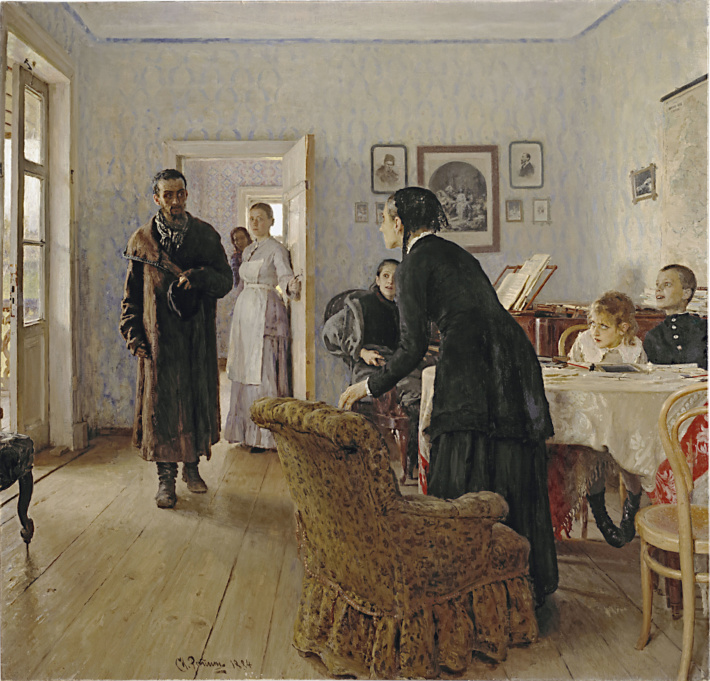
Ilya Repin grew up in poverty and hardship, living among the military as his father served in the military. He showed passion for the art at 13 and began to take art classes at a studio of a local artist. Soon, he became so good that he received commissions to paint the icons, which gave him financial freedom to fulfill his dream. In 1863 the artist travels to St. Petersburg to study art at the Academy. Not admitted the same year, he works on his drawing to get admission the next year. Repin becomes quick at gathering medals and awards for his studies and achieves great success with his final Academic project. At the same time he completes a commissioned piece – “Barge haulers.” After his travels in France, he comes back home to paint with the Itinerants.
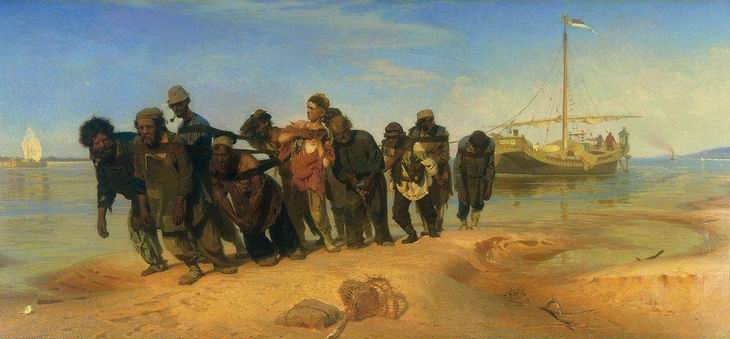
Repin believed in moral and social purpose in his art and painted peasant life like no other artist of his time. He depicted daily struggles and overwhelming poverty of workers and peasants who lived in stark contrast to well-dressed high society of the Imperial Russia. In this painting of Barge Haulers we see the never-ending bank of the Volga river where the blinding sun is as strong as the people below it.
Pavel Fedotov (1815-1852)
Pavel Fedotov was born in a large and poor family in Moscow and spent his childhood years among his neighbors. His parents put him into the cadet corps at eleven years of age where the artist showed himself as a brilliant student. He began to sketch the caricatures of his teachers and teacher aids on the pages of his notebooks. When he graduated as the ensign of the Finnish regiment, he was found of music and poetry, translated articles from German and sketched his friends. Being very poor, he couldn’t participate in his friends’ parties and continued to work on portraiture and caricature. After a considerable conviction of his friends, he left the service and entered the Academy to study art.
His art instructors doubted his talent because Fedotov ignored the academic principles of battle painting composing horses and soldiers, and spent his evenings painting genre scenes remembered from his childhood. The artist lived in modest conditions, sending part of his service pension to his family back home. However, his sense of humor never let him give up on himself and eventually his talent got noticed by a famous Russian fabulist Ivan Krylov, who wrote him a letter asking to give up the Academy and work on his genre painting.
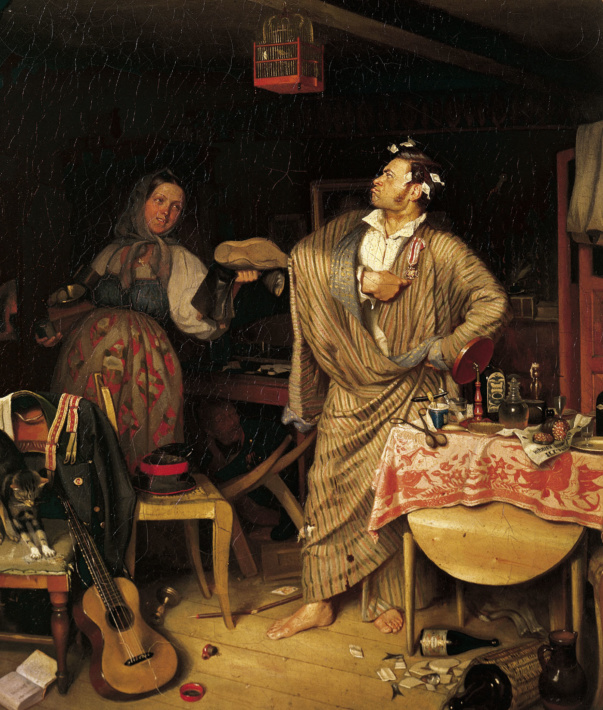
Pavel Fedotov left the Art Academy, and in 1847 showed his first painting “Just knighted. Morning of the official who received his first cross.” The artist loughs at a proud clerk who is shown after his party, living in devastating poverty. The second painting “The Picky Bride” followed the same year to impress his former teachers from the Academy.
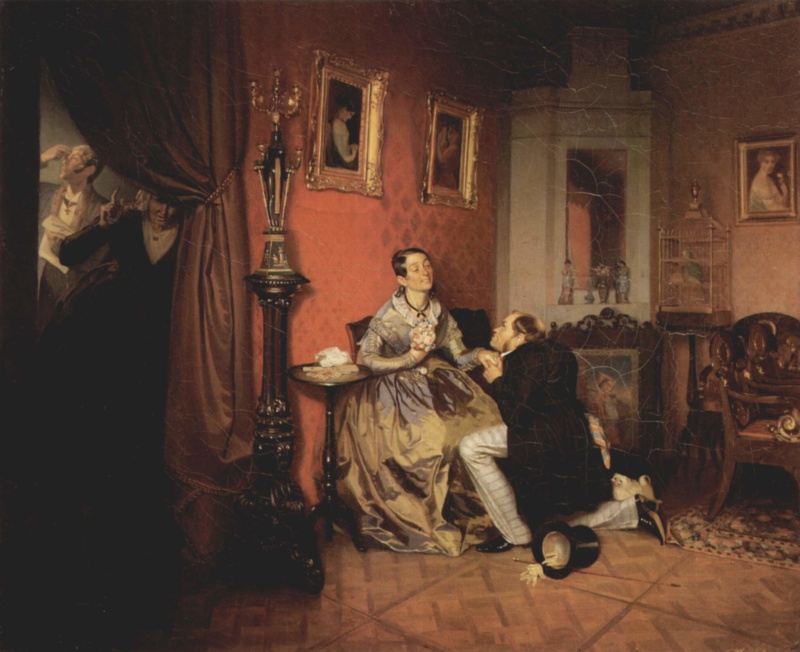
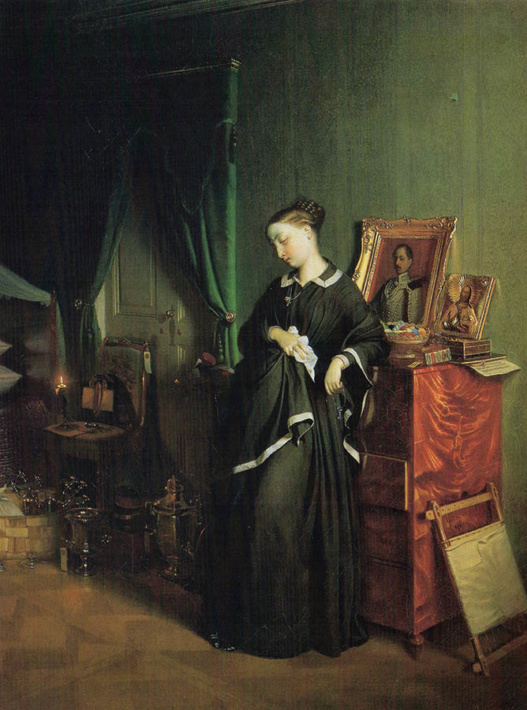
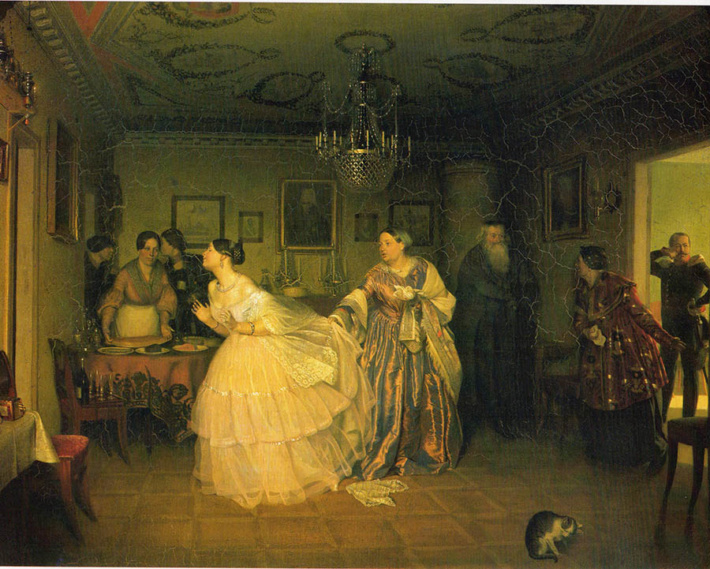
The artist exhibited his masterpiece titled “The Matchmaking of a Major” in 1848 that prompted him an honor award of the Academician. He depicts a beautiful bride running out of the living room as soon as she saw her future groom appear in a doorway. Richly dressed, her mother catches the bride by her gown. This paining brought the artist fame and financial success. Fedotov wished to travel to England to study genre art, but his friends noticed a change in the artist in 1852. Soon, he was placed in the asylum where he died the same year.
In his short life, the artist left tremendous legacy in Russian art by opening a new direction in Russian genre painting. Most of his oil paintings, sketches and portraits can be seen at the State Tretyakov Gallery in Moscow today.
Vasily Perov (1834-1882)
Vasily Perov received his school education from a local deacon, who taught the boy math, language and the Bible. The boy showed great success in calligraphy and his teacher named him Perov (‘Pero’ sounds similar to a ‘feather’ in Russian). Perov’s parents didn’t allow their son to enter a local art school, but let him take some private art lessons. Thanks to one of his relatives, Perov enters the art school later in 1852 and studies there to receive awards. After his graduation, he spends two years in Paris but ‘unable to paint anything worthwhile’ in his words, he begs the Academy to let him come back home. (Best artists received scholarships to spend 1-2 years in Western Europe after their graduation at the Academy).

Besides masterful portraits, Perov paints great genre paintings that capture the reality of Russian life and its people. His art explores the disparity between the rich and the poor as well as the hypocrisy of the church clergy. Despite his fantastic abilities and successful exhibitions, the artist didn’t consider himself worthy of attention. He lived modestly and died in poverty. Most of his paintings can be viewed at the State Tretyakov Gallery in Moscow today.
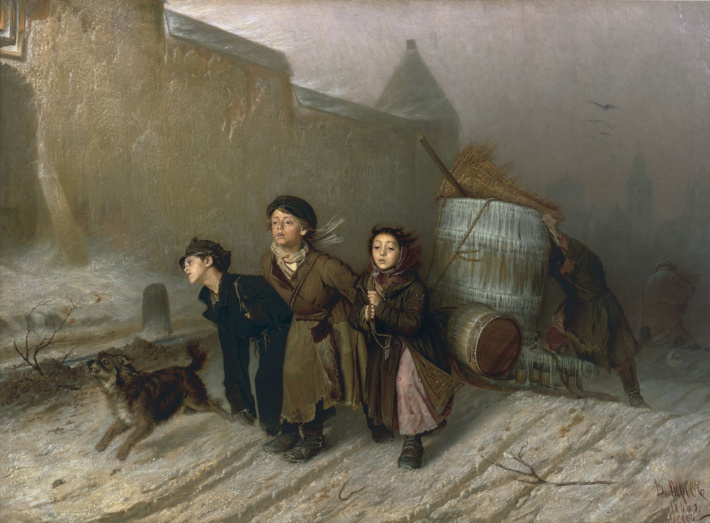
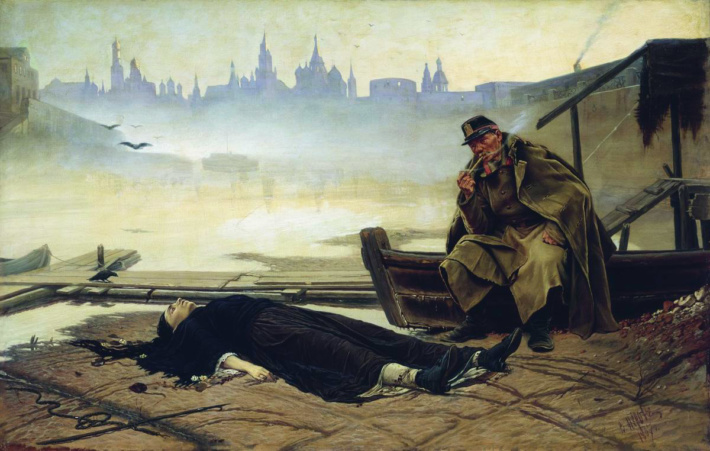
In this painting, the artist shows an indifferent policeman sitting and smoking over a dead body of a poor woman (presumably a prostitute) that happened so often that the officials expressed no interest in the lives of the disadvantaged.
There are more Russian artists who contributed to the legacy of Russian art in the Itinerants movement that included Ivan Kramskoy, Vasiliy Polenov, Vasiliy Surikov, Vladimir Makovsky, Mikhael Klodt, etc. Female painters were nonexistent until the 20th century Russia.
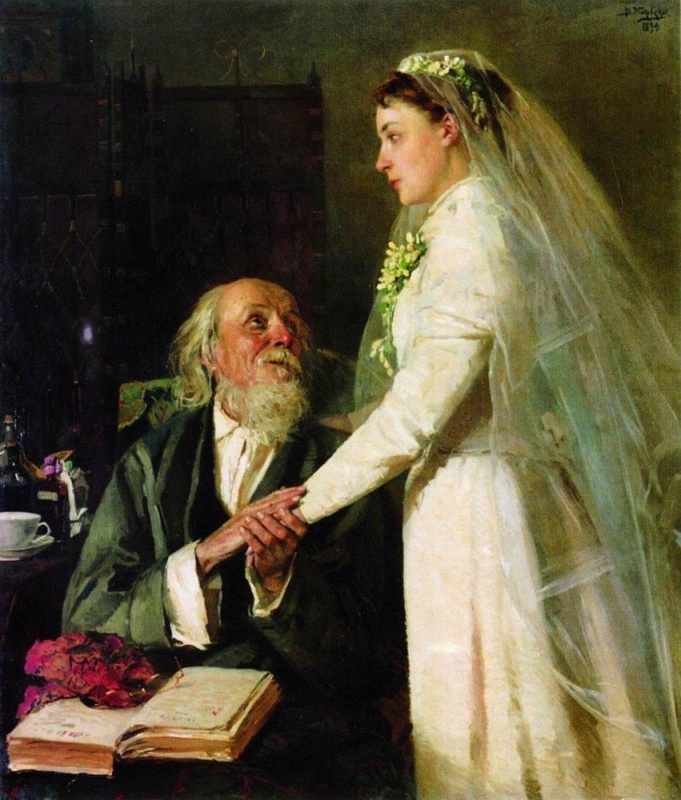
To continue reading about the 19th-century Russian portrait painting, please follow this link: https://veronicasart.com/19th-century-russian-art-and-portrait-painting-eyes-are-the-window-to-the-soul/
Check out the visionary art for sale: https://veronicasart.com/shop/